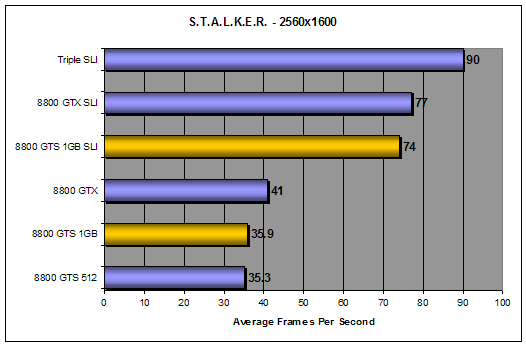Palit GeForce 8800 GTS 1GB Sonic SLI Video Card Review
S.T.A.L.K.E.R.
S.T.A.L.K.E.R.: Shadow of Chernobyl
S.T.A.L.K.E.R.: Shadow of Chernobyl uses the ‘X-ray Engine’ to power the graphics. It is a DirectX 8/9 Shader Model 3.0 graphics engine. Up to a million polygons can be on-screen at any one time, which makes it one of the more impressive engines on the market today. The engine features HDR rendering, parallax and normal mapping, soft shadows, widescreen support, weather effects and day/night cycles. As with other engines that utilize deferred shading (such as Unreal Engine 3 and CryENGINE2), the X-ray Engine does not support anti-aliasing with dynamic lighting enabled. However, a “fake” form of anti-aliasing can be enabled with the static lighting option; this format utilizes a technique to blur the image to give the false impression of anti-aliasing. The game takes place in a thirty square kilometer area, and both the outside and inside of this area is rendered to the same amount of detail.

Benchmark Results: At a game resolution of 2560×1600 the we found that S.T.A.L.K.E.R.: Shadow of Chernobyl can really put a hurting on even the highest end video cards available today. The extra memory on our Palit 8800 GTS 1GB isn’t doing much to help us here, allowing the 8800 GTX to pull a few frames ahead.


Comments are closed.